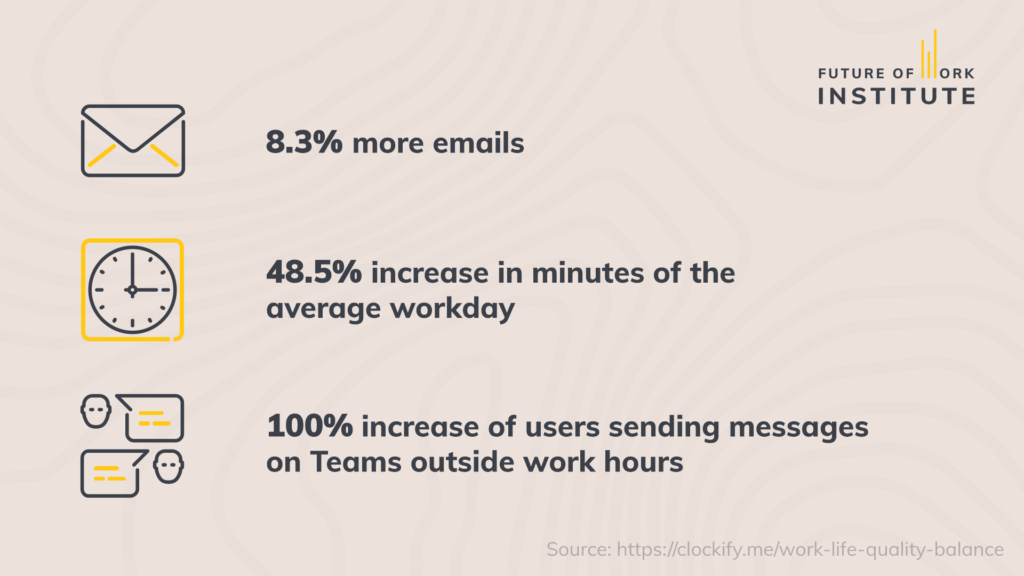Work-life balance has been an increasingly popular topic over the last five years as indicated by Google trends. With a pandemic forcing most workers to turn their living rooms into offices, it might be a good idea to revisit this topic and see how things have changed.
The Good
Overall, the adaptation to remote work looks promising. A survey from September 2020 found that 73% of Americans experienced better work-life balance as a result of working from home. Even more, remote workers can be as much as 25% more productive than their office counterparts. This makes sense when taking into consideration the elements that comprise a healthy work-life balance, and the way in which they changed over the past year.
Firstly, time management of work and leisure activities has become easier because time spent commuting can now be invested into cooking a healthier meal or pursuing hobbies. Secondly, the stress associated with being in an office (e.g. distractions, interpersonal conflicts) has decreased. Lastly, stress levels associated with change were mitigated as many employers were quick to make available the infrastructure needed to turn a living room into an office.

The Bad
Although encouraging, all these findings do not paint the full picture. Working remotely throughout the pandemic has come with negative consequences as well. One finding indicated that during the North American, European, and Middle Eastern lockdowns, 8.3% more emails were sent after business hours and consequently the average work day increased by 48.5 minutes. Lastly, twice as many users are now sending messages through Teams outside working hours. Such findings give a more vivid picture to include the drawbacks associated with remote work.
The Ugly
Nonetheless, when weighing all the evidence, is remote work good or bad? It is not that easy to issue a verdict. Many people believe they got a taste of remote work due to the pandemic; however, as Natalia Cieslak, Director of the Future of Work Institute at Appjobs pointed out, that is not entirely true. Most were forced into remote working without proper preparation nor adequate tools available to help with coping and adjusting to the new changes.
Most leisure activities are forbidden and workers are confined to their homes which now doubles as workplace, school, and leisure space. This is in stark contrast to what remote work used to mean. Before the COVID-19 crisis, remote workers could be found sipping a cup of tea at the corner coffee shop, or working from a public library. All these alternatives were taken away by the pandemic closures and thus limiting remote work to work from home conditions.
The Future of Work
With the vaccine giving hope for a more normal future, one has to wonder: what will normal really mean in a post-pandemic world? Some signs pointed towards remote work being the future. In a pre-pandemic US study, 91% of remote workers indicated that teleworking improved their work-life balance. And the benefits go beyond just the employees themselves. In Sweden, plans were made to attenuate a painful housing shortage by transforming office spaces into homes.
Perhaps this is the new normal. At least the pandemic-mandated remote working proved one hunch to be true: that meeting could have, indeed, been an email.

